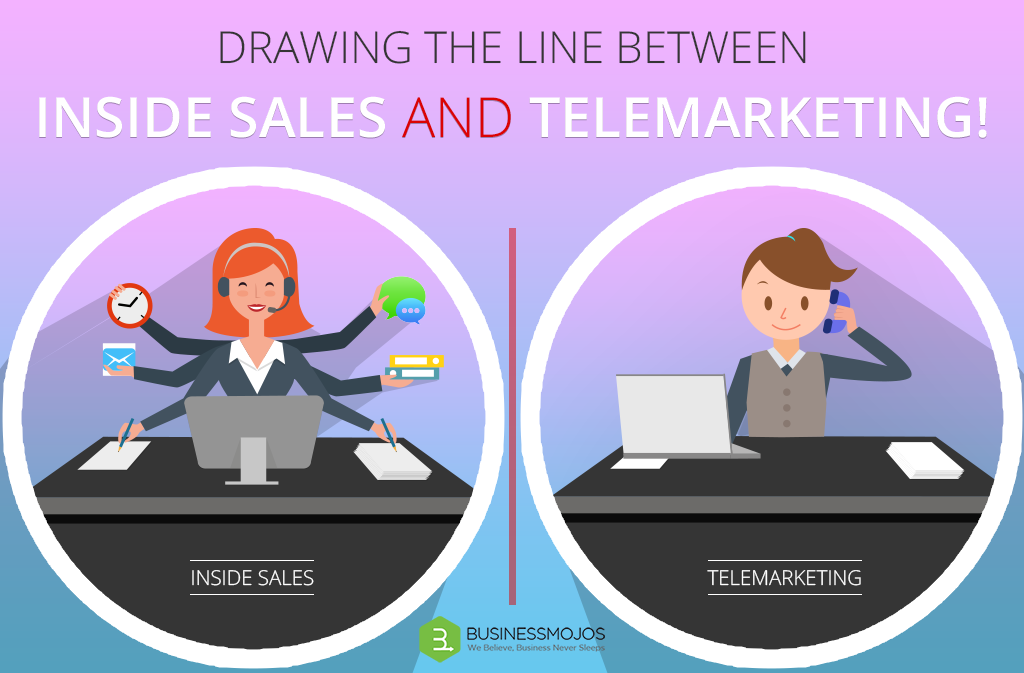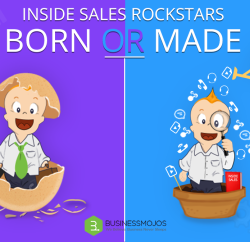The sales industry is revolutionizing by the minute. The number of processes and approaches to selling are sprouting too. While we are arriving at new selling concepts each day, we must move forward only after clearing our understanding about certain commonly mistaken concepts.
I would like to share a simple example to elaborate the above point. Our company, BusinessMojos is a Sales and Marketing Consultancy Service Company for IT industry and our expertise lie in Inside Sales. Therefore, there are plenty of intakes for the inside sales rep position.
Through the hiring process our HR is usually frustrated listening to one perpetual question, “Inside Sales means a calling job right?” True it involves calling, but they misunderstand it to being a call center job. Instead of telling them the difference out rightly; she gives them this scenario:
You have two different products to sell; one is a credit card and the other is a cloud based software solution. Both products are to be sold to the CTO- Chief Technology Officer of a reputed company who has been in the IT industry for over a decade, now how would you go about selling them?
When you look at it from a distance; both inside sales and telemarketing may seem to be similar, but try looking at it at a micro level and the difference might take you by surprise. Call an Inside Sales rep as a telemarketer once and instantly watch his face turn red with anger, frankly I would get offended too. It is like calling the head chef of a renowned restaurant as a waiter. Both eventually work to serve food to their customers but the skills, and process is different for both.
The same way we can draw the line between inside sales and telemarketing on two basis:
• People/ Professionals.
• Process.
People/Professionals:
1. Telemarketer is a person who makes X number of calls per day to focus on data building by asking scripted questions and sell a product with the focus of building the brand. On the other hand Inside Sales rep make calls with a focus of selling by creating opportunities over a call and building trust and relationship with the prospect.
2. Telemarketers require minimal training and their level of knowledge is limited to the product they are selling, these are the guys you may have heard and cursed a dozen times, they stick to a scripted sales talk. Inside sales professionals not only require vigorous but also continuous training. Regular call monitoring, live call shadowing is required. They do not prefer a scripted sales pitch since their pitch differ for every prospect. Get an out of the box insight on inside sales hire on our previous blog.
3. The KPI for a telemarketer is limited to the number of calls and the number of positive responses he was able to achieve within a day. An inside sales professional will be scrutinized mainly on plenty of things, to name a few; the number of appointments held, number of completed product demos and number of leads generated as per prospect criteria which needs to be defined through BANT– Budget, Authority, Need and Time strategy.
Process:
1. Before making a call, a telemarketer has hardly any research to do since all he needs to know is the details of the product he is selling. But, an inside sales professional, apart from the subject matter knowledge has to research about his prospects, their company and work profiles. Their research is mainly to support and validate their value proposition.
He may go through his prospect’s social profiles like LinkedIn or Twitter to understand and learn if there is any substantial information that could be used in his conversation such as any awards or recent happenings in the prospect’s professional life. It gives more leverage to build a rapport with his prospect thereby more chances of a sales deal.
2. The time taken to close a deal by a telemarketer is within one or maximum two calls whereas, an inside sales rep could easily take up to 2 years just to crack a deal. Since his intention is to not be too pushy yet persistent and build a rapport he gives ample gaps between his follow-up calls. In B2B inside sales, getting hold of the right people takes anywhere between 8 to 15 contact attempts even before you can begin discussing business. Also, an inside sales professional has to go through a number of decision makers which consumes more time.
3. The target segment for a telemarketer is vast since they mostly deal with B2C products or services. On the other hand for an inside sales professional the target segment is defined and limited in accordance with the product or service. An inside sales rep will have to most often contact the top of the hierarchy in a company, the ones who are the decision makers of a purchase because inside sales is focused on the B2B sector.
4. Ticket amount or the deal size of a product sold by a telemarketer is very small when compared to the deal size of a product sold by an inside sales rep.
5. The tools or technology used by a telemarketer is usually an outdated call center software, dialer based that is efficient enough to make calls. Whereas, the inside sales industry extensively uses various sales acceleration technologies, CRM and more. Inside sales need to have a higher aptitude for technology.
Bottom line is clear; there are no two peas in a one pod. Next time when you face a similar problem like our HR, be sure to show them this article or try the same technique as ours!







